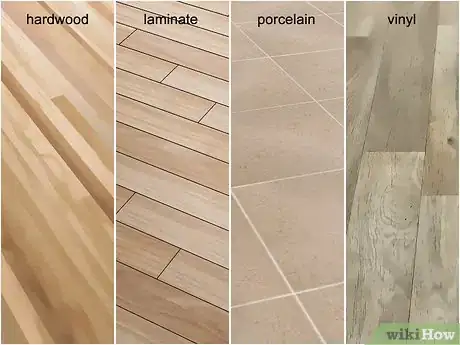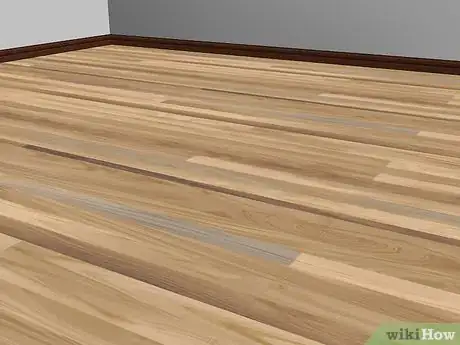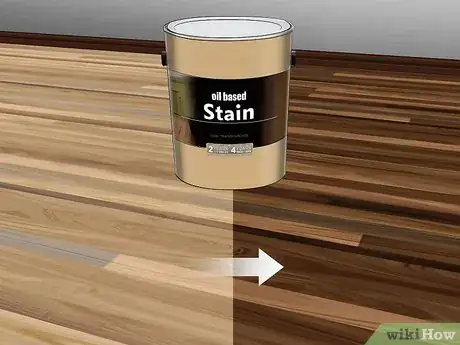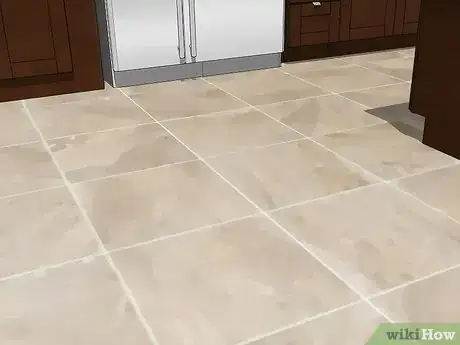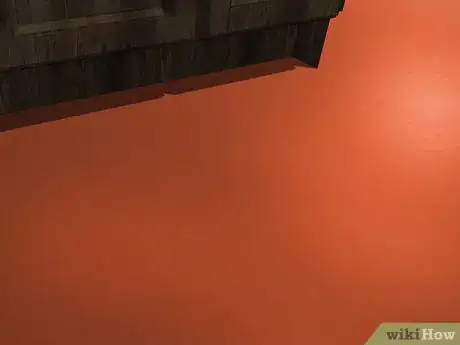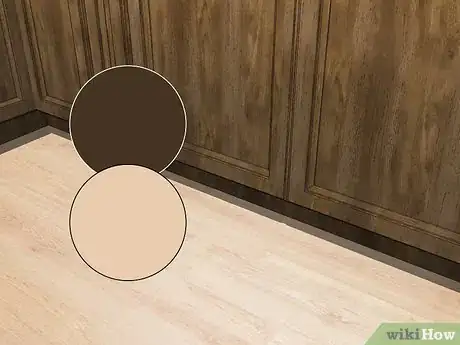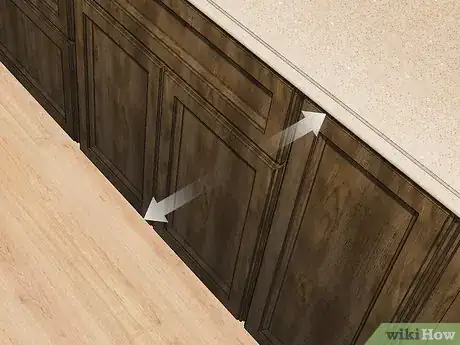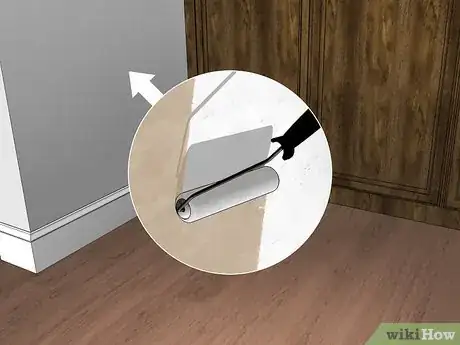This article was co-authored by Katherine Tlapa. Katherine Tlapa is an interior designer, currently working as a Design Specialist for Modsy, a design service based in San Francisco. She also runs her own DIY Home Design blog, My Eclectic Grace. She received her BFA in Interior Architecture from Ohio University in 2016.
There are 7 references cited in this article, which can be found at the bottom of the page.
wikiHow marks an article as reader-approved once it receives enough positive feedback. In this case, 94% of readers who voted found the article helpful, earning it our reader-approved status.
This article has been viewed 64,171 times.
The color of your kitchen floor can set the tone of your room and tie together your kitchen décor. When picking your floor color, you can choose between light, dark, or bold varieties. Kitchen flooring type includes laminate, vinyl, hardwood, porcelain tile, slate tile, limestone, concrete, and cork, and all options come in a variety of colors and textures. Pair your flooring to your kitchen’s style, and soon you’ll have the remodeled kitchen of your dreams!
Steps
Choosing Lighter Colored Flooring
-
1Select light tones to make a small kitchen look more spacious and open. White or grey floors are good options for small kitchens with low ceilings. Light floors will reflect more light, which makes your kitchen look brighter. Light floors look quite nice with white or colored walls.[1]
- Lighter flooring is especially popular for homes near the beach. These floors go well in many homes, though, as light neutral colors are incredibly versatile.
- Light colors also conceal scratches well and will fade less over time compared to dark colors.
-
2Choose between light hardwood, laminate, porcelain, or vinyl flooring. Each of these flooring options come in light, white, or grey tones. Visit a home supply store, and narrow your options based on personal preference and price.
- Laminate flooring, otherwise known as engineered hardwood, is an attractive, affordable option. Laminate costs about $1-6 (£0.7-5) per square foot (square meter) uninstalled. It will cost about about $2-8 (£1.4-5.7) per square foot (square meter) to install.[2]
- Vinyl is an easy-to-clean and cost-effective option. Vinyl costs on average $1-5 (£0.7-4) per square foot (square meter) and about $1-2 (£0.7-1.5) per square foot (square meter) to install.[3]
- Use hardwood floors for a timeless, durable kitchen floor option. Hardwood costs about $3-12 (£2-9) per square foot (square meter) and about $5-12 (£4-9) per square foot (square meter) to install.
- Go with porcelain tile for a durable, low maintenance floor option. Porcelain floors cost between $1-20 (£0.7-15) per square foot (square meter) and about $5-10 (£4-7) per square foot (square meter) to install.
Advertisement -
3Go with tan, natural flooring for a traditional kitchen look. Tan floors are a good choice for traditional kitchens, especially if you have different colored kitchen décor. You can refinish existing hardwood or cork floors with a tan, natural shade of stain.[4]
- Tan flooring is a good choice if you have natural colored cabinets or a tan countertop. Tan floors also look great with bold colored walls, like red or blue.
- Visit a home supply store, and purchase water-based stain in a shade of your liking. Apply the stain following the directions on the package. Remember, though, that the stain should tone your wood or make it darker. It is usually difficult and costly to stain dark woods lighter.
-
4Purchase natural colored hardwood, laminate, vinyl, tile, or cork. Visit a home supply store, and review their selection of natural colored flooring. All flooring types can come in a tan or natural color, and you can make your decision based on your budget and style.
- Laminate and vinyl flooring are the cheapest options. Tile and hardwood can get pricey, depending on the quality and materials.
- Cork flooring is another option for natural colored floors. Cork flooring is a slip-resistant, eco-friendly floor choice. Cork floors cost about $2-6 (£1.5-5) per square foot (square meter), and installation costs about $5-10 (£4-7) per square foot (square meter).[5]
Selecting Darker Flooring Tones
-
1Purchase red and brown toned flooring to add warmth and coziness. Visit a home supply store, and look for warm floor colors. To add warmth, your best option is to go with hardwood floors, though you can also find laminate and tile flooring in brown and red tones.[6]
- Warmer toned floors are attractive with brown wooden kitchen cabinets or dark countertops.
- This is a good option for country-style or cabin-style homes. Darker tones generally compliment rustic looks.
-
2Use a warm-toned stain to recolor your existing hardwood or cork floors. Buy stain from a home supply store in an attractive, warm tone. Apply your stain using a brush, and make sure to read and follow the directions outlined on the stain itself.
- Stains with a reddish or copper hue are popular. You can also choose darker, natural shades.
-
3Purchase dark flooring if you have a large kitchen with high ceilings. Dark flooring provides a nice contrast to lighter colored walls. Dark floors also make a large room feel more cozy.[7]
- Sweep your dark floors often so you don’t see dust and dirt.
- Dark shades are good choices for modern kitchens.
- Choose very dark or black flooring for a dramatic, elegant look.
-
4Recolor existing cork or hardwood with a dark or black stain. Visit a home supply store and look for stains in dark brown or black varieties. Select 1 that you like best. Refinish your floors using the stain and a brush. Always follow the outlined directions on your stain.
- For hardwood floors, you can purchase dark colored wood or stain it a dark brown or black shade.
Going with a Bold Floor
-
1Select a neat pattern to make your floor the focal point. You can select an interesting flooring in nearly any flooring material. This option may get pricey, though your kitchen will look interesting and exciting with your floor as the focal point.
- You can choose a laminate or vinyl flooring in a fun stone texture.
- Consider selecting a hardwood or cork floor with an interesting, intricate grain pattern. You could also consider a reclaimed wood floor that provides extra contrast and character to your space.
- Think about a tile option with an elegant marble swirl.
-
2Go with a bold color for a daring, bright kitchen floor. Visit a home supply store, and look for a laminate, tile, or vinyl flooring in a bright color. Your kitchen will be unique and stand out.[8]
- Red, green, or light blue floors can be attractive and loud floor color options.
-
3Create your own unique floor out of repurposed or recycled materials. Some people have made floors out of material like repurposed wood, inlay materials, and even pennies. Look up unique kitchen floors online to gather some ideas, and use your creativity to select an untraditional floor option.
- Consider using recycled materials like bottle caps, paper bags, or corks from wine bottles. Recycled material can add interesting texture and color to your floors.
- Your installation will depend on the type of materials used. Search on Google for assistance.
Matching Your Kitchen
-
1Compliment your flooring to your cabinets if you want to create cohesion. Look at the color of your cabinets, and decide on a complimentary hue for your floors. Take a reference picture of your cabinets before you visit a home supply store. Then, select a flooring option that best compliments your cabinets.[9]
- If you have wooden cabinets, use hardwood or cork floors in a contrasting tone. This will create a visual break that keeps your kitchen from seeming too monochromatic. So if you have warm espresso cabinets, for example, you may want to choose another, lighter hued warm wood. You can also use laminate as a cheaper alternative.
- For example, if you have light wooden cabinets, choose a light hardwood floor.
-
2Choose a floor color based on your countertops to balance your kitchen. You can also match your flooring to your countertops instead of the cabinets. This way, the surfaces will be similar and create balance in your kitchen. Take a note of the shade of your countertops, and select a flooring option in a similar color.[10]
- For example, if you have a dark colored countertop, go with a dark colored floor to match. For light countertops, choose light flooring.
-
3Repaint your walls to match your colored flooring if needed. After you have selected the color of your floor, you can make updates to your kitchen to tie everything together. If the color of your walls doesn’t look great with your new floors, select a more appropriate color and repaint your kitchen.
- For example, if you have dark wooden cabinets and you purchase dark hardwood floors, you may want lighter walls, like tan or beige.
Expert Q&A
Did you know you can get expert answers for this article?
Unlock expert answers by supporting wikiHow
-
QuestionDo floors have to match countertops?
 Katherine TlapaKatherine Tlapa is an interior designer, currently working as a Design Specialist for Modsy, a design service based in San Francisco. She also runs her own DIY Home Design blog, My Eclectic Grace. She received her BFA in Interior Architecture from Ohio University in 2016.
Katherine TlapaKatherine Tlapa is an interior designer, currently working as a Design Specialist for Modsy, a design service based in San Francisco. She also runs her own DIY Home Design blog, My Eclectic Grace. She received her BFA in Interior Architecture from Ohio University in 2016.
Interior Designer
-
QuestionWhat is the best material for a kitchen floor?
 Katherine TlapaKatherine Tlapa is an interior designer, currently working as a Design Specialist for Modsy, a design service based in San Francisco. She also runs her own DIY Home Design blog, My Eclectic Grace. She received her BFA in Interior Architecture from Ohio University in 2016.
Katherine TlapaKatherine Tlapa is an interior designer, currently working as a Design Specialist for Modsy, a design service based in San Francisco. She also runs her own DIY Home Design blog, My Eclectic Grace. She received her BFA in Interior Architecture from Ohio University in 2016.
Interior Designer
-
QuestionWhat color flooring shows the least amount of dirt?
 Katherine TlapaKatherine Tlapa is an interior designer, currently working as a Design Specialist for Modsy, a design service based in San Francisco. She also runs her own DIY Home Design blog, My Eclectic Grace. She received her BFA in Interior Architecture from Ohio University in 2016.
Katherine TlapaKatherine Tlapa is an interior designer, currently working as a Design Specialist for Modsy, a design service based in San Francisco. She also runs her own DIY Home Design blog, My Eclectic Grace. She received her BFA in Interior Architecture from Ohio University in 2016.
Interior Designer
Warnings
- Be mindful of the number of patterns or textures in your kitchen. If you have a large granite countertop that is your focal point, you probably do not want a loud floor pattern.⧼thumbs_response⧽
- Flooring can get expensive quickly. Be sure to budget your kitchen renovations.⧼thumbs_response⧽
References
- ↑ https://www.apartmenttherapy.com/on-the-kitchen-floor-dark-vs-light-flooring-179740
- ↑ https://www.zillow.com/blog/how-to-pick-kitchen-floor-131715/
- ↑ https://www.houselogic.com/by-room/kitchen/smart-options-kitchen-flooring/
- ↑ https://www.youtube.com/watch?v=w42JZi2X4TE
- ↑ https://www.houselogic.com/by-room/kitchen/smart-options-kitchen-flooring/
- ↑ https://youtu.be/w42JZi2X4TE?t=1m2s
- ↑ https://www.apartmenttherapy.com/on-the-kitchen-floor-dark-vs-light-flooring-179740
- ↑ https://www.houselogic.com/photos/windows-doors-and-floors/cool-flooring-ideas/slide/a-belted-floor-its-a-cinch/#slide/0
- ↑ https://youtu.be/eJGcSO0n5h8?t=1m44s
About This Article
Choosing the right flooring color for your kitchen depends on the atmosphere you want to create. For a more spacious look, go for light tones, like white, grey, and light wood colors. These will also conceal scratches better than darker colors. For a traditional look, choose tan hardwood or cork. If you’d rather have a warm, cozy feel to your kitchen, look for red and brown tones. You can also get warm-toned stains for light wood flooring if you change your mind. If you want your flooring to be the focal point of your kitchen, go for stone-colored tiles in a cool pattern. For more tips from our Interior Design co-author, including how to match your kitchen cabinets to your flooring, read on!

